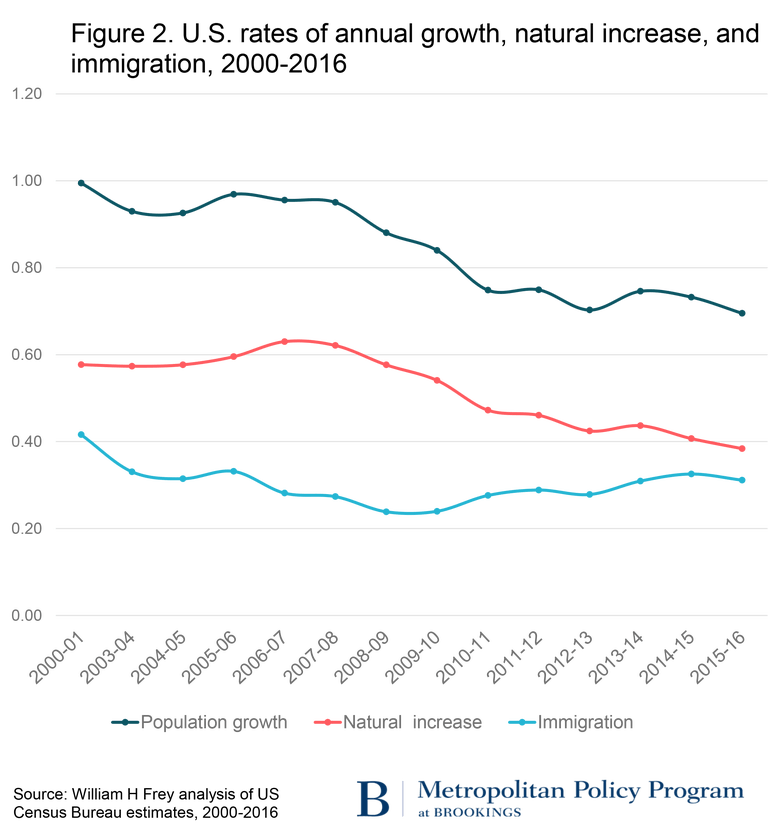Over the past decade, Washington, DC has tried all sorts of things to stimulate economic growth: tax cuts, stimulus spending, rock-bottom interest rates, and more. But one of the key ingredients in any recipe for long-term growth is requires something Americans can only do for themselves: having babies.
Population growth is needed to keep economies growing. The relationship is complex, of course -- a population that grows faster than increases in productivity, for instance, can be a problem -- but in general, economists believe that there is a strong correlation between population growth and long-term economic growth.
Related: What a Trade War With China Could Do to the Economy
In the United States, the population growth rate is now a low not seen since the Great Depression, according to a study by William H. Frey, a senior fellow in the Metropolitan Policy Program at the Brookings Institution. In the 2015-2016 period, the U.S. population increased by only 0.7 percent. That’s compared to a rate of about .95 percent, on average, over the past 70 years, and spikes as high as 2.1 percent during the height of the post-World War II Baby Boom.
“It is likely that some of the reduced fertility in recent years is attributable to recession-related delays in family formation among young adult millennials; this trend could reverse in the near future as the economy continues to grow,” Frey writes. “But higher death rates are likely to continue due to the long-term aging of the population, a phenomenon contributing to projected declines in U.S. growth rates, which could drop as low as 0.5 percent in 2040.”
New babies, of course, aren’t the only source of population growth. Throughout its history, the U.S. has seen economic growth boosted by waves of immigrants who take part in the economy as both workers and consumers.
However, immigration rates are also down in recent years, and Congress has been reluctant to pass sweeping immigration reform laws. The conclusion of a presidential election in which the winner spent much of his time promising to build a wall along the Mexican border and otherwise move to block new entries to the U.S. makes it seem unlikely that major immigration reform will be in the offing anytime soon.
Related: Talk of Tariffs from Team Trump Makes Economists Very Nervous
Within the United States, Western States and Southern States in the “Sun Belt” are experiencing significantly faster growth than the nation as a whole, driven in part by internal migration.
“Overall,” Frey writes, “the United States seems to be in the midst of a population growth paradox: As the nation’s population growth continues to stagnate due to fertility declines in the context of an aging population, internal population shifts help places like the Sun Belt continue to grow. Because the latter is more economically driven than former, it is encouraging to see that a key demographic indicator of a strong economy – migration in response to newly emerging employment opportunities – is reviving in tandem with the economy.”

But it could be worse, Frey notes. The U.S. population is growing slowly, but at least it isn’t shrinking.
“Several other industrialized countries, such as Japan, Germany, and Italy are facing the specter of long-term population decline,” he writes. “By comparison, the United States can look forward to continued population growth, albeit at lower levels, for decades to come.”




